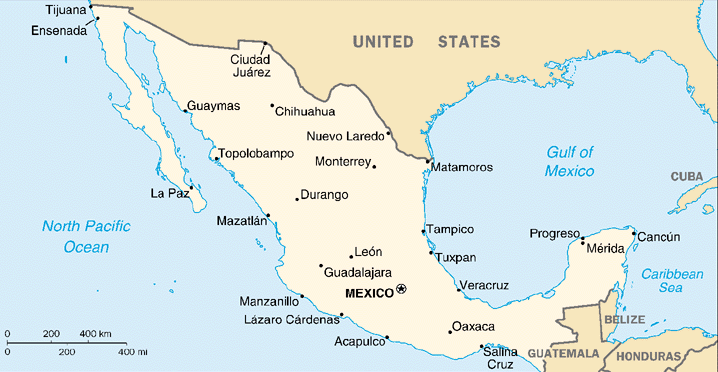
Status Quo Side: United States
Non-Status Quo Side: Mexico
Region: Western Hemisphere
Conflict Type: Interstate
Issues in Dispute: Resources, Territory

Alluvial erosion and floods in 1864 and 1873 had changed the course of the Rio Grande at its deepest channel, which an 1853 treaty had marked as the US-Mexican border, transferring some 600 acres to El Paso, Texas. An 1884 convention agreed to ignore the more recent changes but failed to resolve the 1864 case. Mexico claimed the disputed "El Chamizal " tract in 1895. A 3-member tribunal (US, Mexico and a Canadian jurist) in June 1911 upheld the pre-1864 boundary. US rejection of the award on technicalities triggered widespread accusations in Mexico of bad faith and imperialism which later refused a 1913 US offer of territorial exchange. Internal stability deteriorated after the overthrow of Mexican President Diaz in 1911. US Marines were arrested at Tampico in 1914 and US troops occupied Vera Cruz for 7 months. Mexico, supporting Germany in WWI, broke off relations but war was narrowly averted. Pancho Villa's 1916 raid into New Mexico brought US incursions and a clash between US and Mexican troops at Carrizal, but the internal situation gradually stabilized.
In 1925 the US rejected a Mexican proposal for arbitration of the Chamizal case by the Permanent Court of Justice at the Hague, and from 1927-54 a State Department proposal to recognize the 1911 award was blocked by Texas congressmen and the International Boundary and Water Commission. Mexico experienced similar domestic pressures. Background negotiations continued, but relations soured in 1938 when Mexican President Lazaro Cardenas expropriated US oil and land holdings. After WWII the US sought a new order. President Truman visited Mexico in 1947, the first summit since 1909, and supported the 1911 award. Promising negotiations between the two sides stagnated when the US administration changed. Growth in El Paso exacerbated the problem.
In June 1962 President John F. Kennedy reopened the Chamizal talks with President Lopez in Mexico City and announced agreement on July 18, 1963, stating that the terms gave "effect in today's circumstances to the 1911 international arbitration award". The final settlement, signed August 29, favored the Mexican position but with some concessions to El Paso (including straightening 4.4 miles of the river and lining the bed with concrete so the border would stay put).